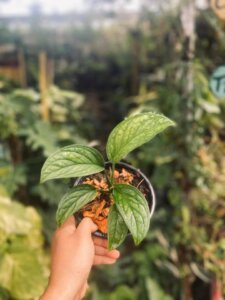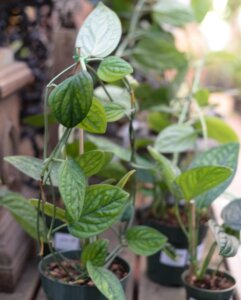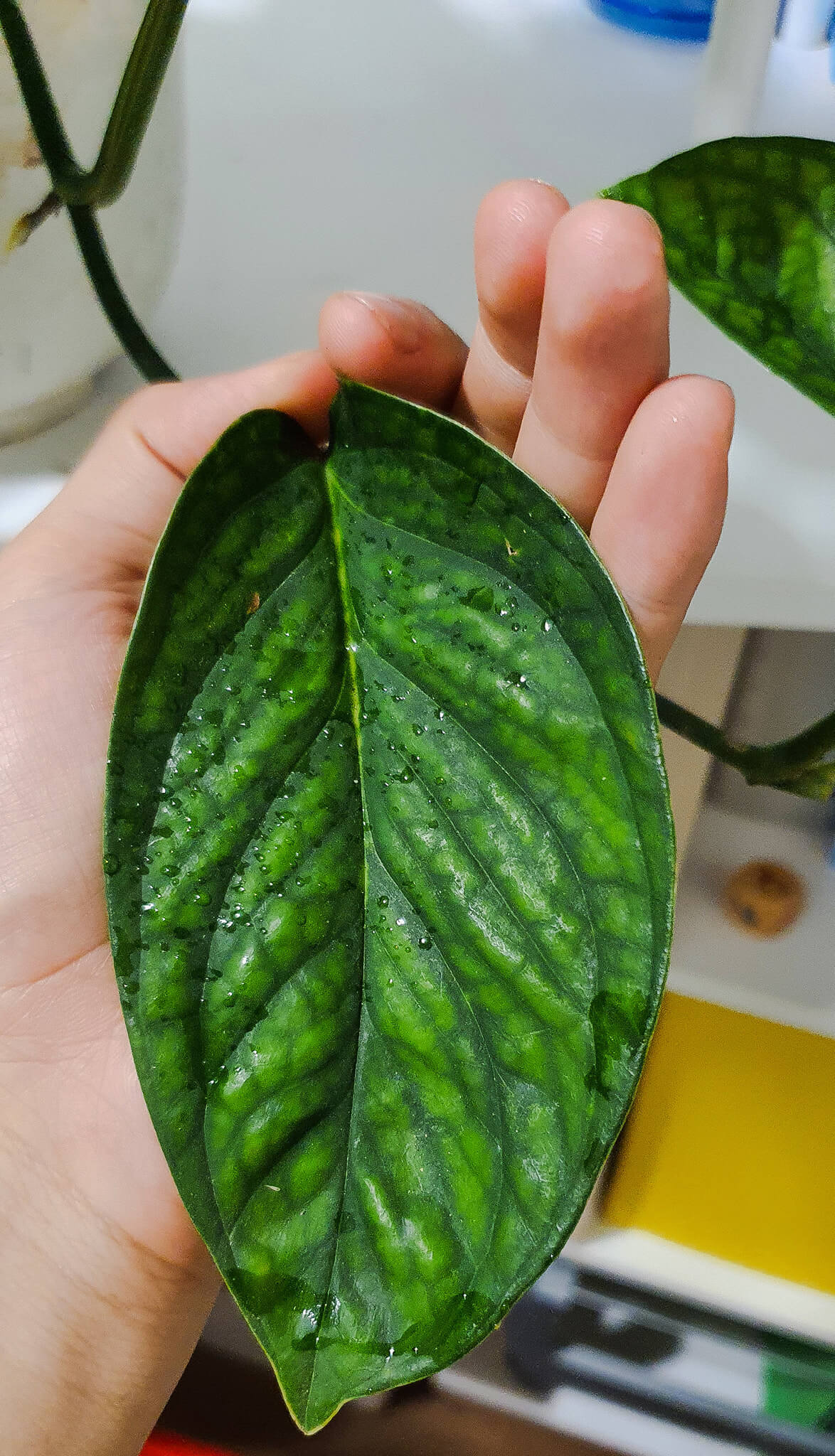Basic Information
The Monstera Peru, also known as Monstera Karstenianum, is an exotic and relatively rare indoor plant known for its unique, textured foliage. Adaptable and easy to care for, this species stands out with its distinctive appearance and climbing habit, making it a prized addition to any indoor plant collection.



Light
Monstera Peru plant prefers medium to bright, indirect light. It needs less sunlight than other Monstera species, making it suitable for areas with less direct light. Avoid keeping it under prolonged direct sunlight, as it may damage the leaves and cause scorching or fading.
Water
This plant possesses drought-tolerant traits because of its thick leaves that store water. To water it thoroughly, allow the soil to dry out halfway through the pot. Over-watering can cause root rot, so it’s essential to ensure that the soil doesn’t always stay wet.
Tip: Water your Monstera Karstenianum when the top 3-4 inches of soil feel dry or when a moisture meter reads 2-3.
Soil
When growing the Monstera Peru plant, using a soil mix that drains well and has good aeration is crucial. A blend of coco coir, orchid bark, and perlite is highly recommended, as it helps prevent waterlogging and root rot while supporting healthy root growth. The pH range of the soil should be neutral, ideally between 5 and 7.5 pH, to ensure optimal growth for your Monstera Karstenianum.
Temperature
Monstera Karstenianum prefers warm temperatures, ideally between 65°F (18°C) and 80°F (27°C). It’s sensitive to cold drafts and freezing temperatures, which can hinder its growth or even cause damage to the plant.
Humidity
Monstera Peru is a plant that needs high humidity in order to grow well. To maintain the required humidity level, you can use a humidifier or place the plant on top of a tray filled with pebbles. Alternatively, you can place the plant in naturally humid areas, such as bathrooms, or group it with other plants to increase humidity levels.
Tip: Make a tray with pebbles and water. Put the plant on top of the pebbles, but not in the water. Water will evaporate and create moisture in the air for the plant to absorb.
Fertilizer
It is recommended to fertilize it once a month during spring and summer when it’s actively growing. When fertilizing, make sure to apply the fertilizer around six inches away from the base of the plant. However, during winter when the plant is in a dormant phase, it’s best to cut back on fertilization. Over-fertilizing can lead to an accumulation of salt in the soil, which can harm the plant.
Tip: Use a time-release fertilizer that contains a sufficient amount of magnesium for optimal growth
Growth Rate
Monstera Karstenianum exhibits moderate growth, developing long, climbing vines and large, textured leaves. With proper care, it can reach impressive lengths, making it an excellent choice for vertical spaces or hanging baskets.
Pet Safety
It’s important to note that Monstera Peru is toxic to pets if ingested. Keep the plant out of reach of pets to prevent accidental consumption and ensure their safety.
Grow in Semi-Hydro
- Monsteras, known for their robust growth and iconic split leaves, flourish in semi-hydroponics systems like LECA/Pon, thanks to their adaptive root systems and love for moisture.
- Transitioning Monstera to semi-hydroponics is effective with a Nutrient Stagnant Wicking (NSW) setup, ensuring a stable and efficient growth environment.
- In LECA/Pon, Monstera roots quickly adjust, overcoming any initial challenges with root adaptation in the NSW system.
- A nutrient mix with a concentration of about 800-1000ppm is ideal for fertilizing Monsteras in semi-hydro setups.
- Monsteras are adaptable to various temperature and humidity conditions, making them suitable for growth in diverse indoor environments.
- Ongoing care includes regular monitoring of the water level in the reservoir and periodic flushing of the system to promote healthy and continuous growth.
Tips
- Provide a support structure like a moss pole for climbing.
- Prune regularly to control growth and encourage bushiness.
- Check for pests like spider mites and mealybugs and treat as needed.
- Avoid over-watering and let the soil dry partially between waterings.
- Keep the plant in a location with stable temperatures, away from drafts.
Monstera Karstenianum is a low-maintenance plant that can add a touch of tropical elegance to any indoor garden.
Happy planting! 🌱


